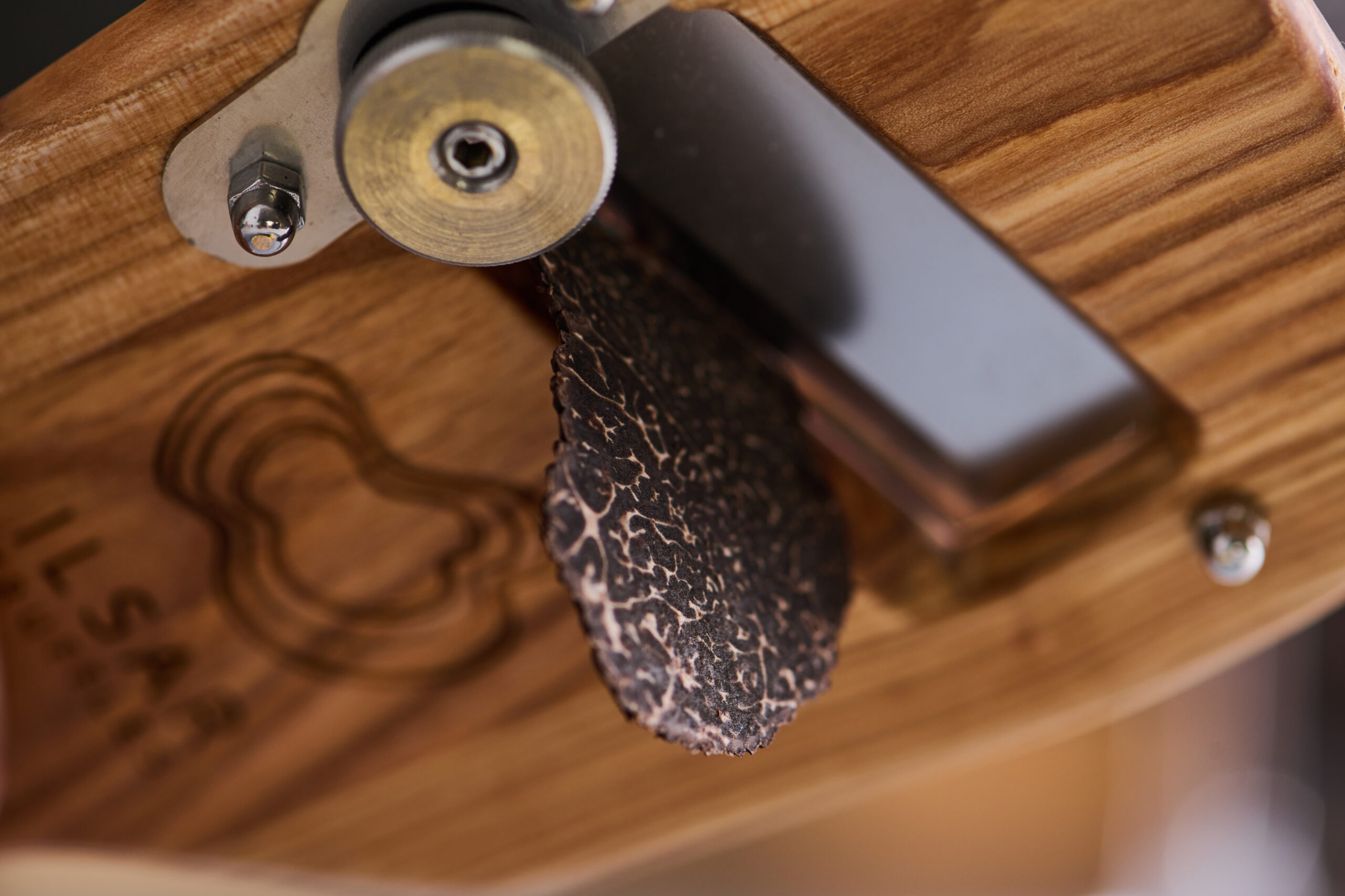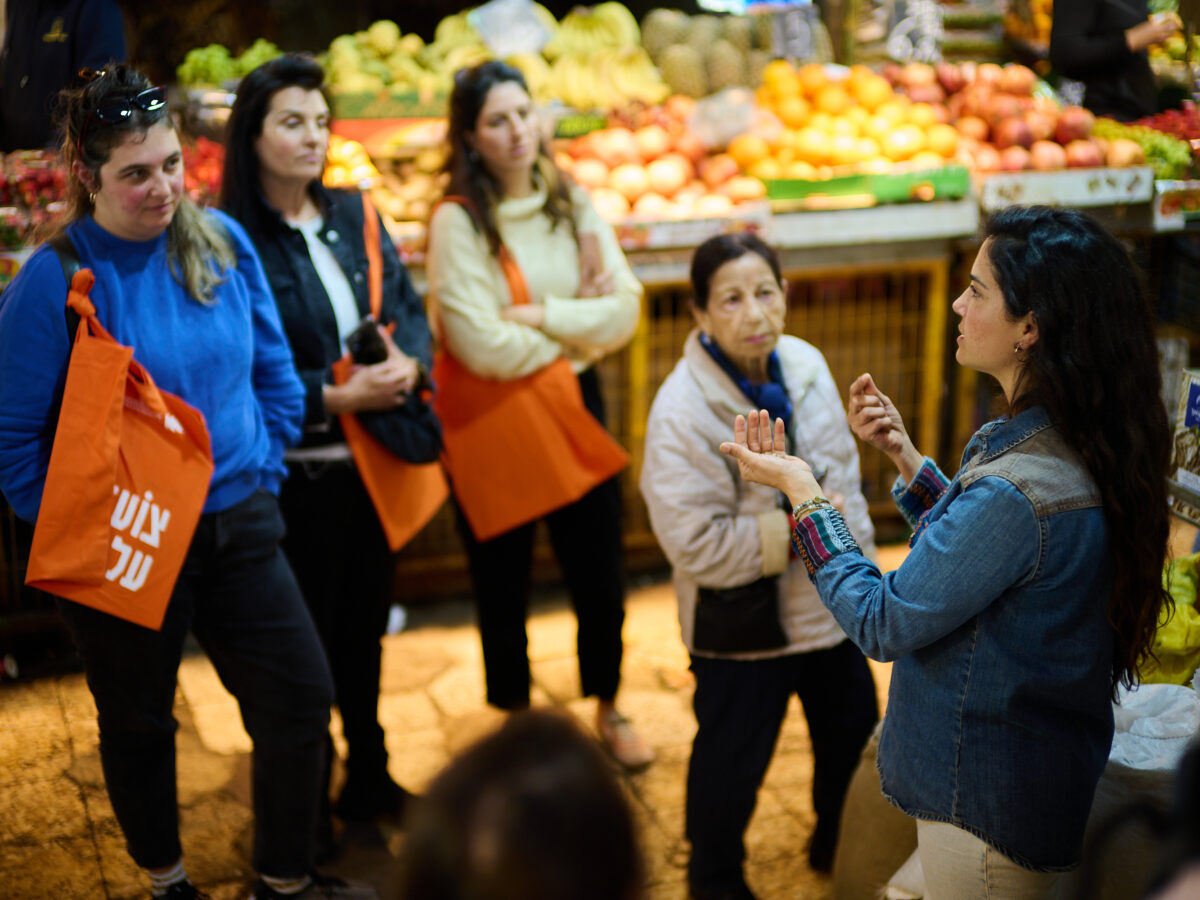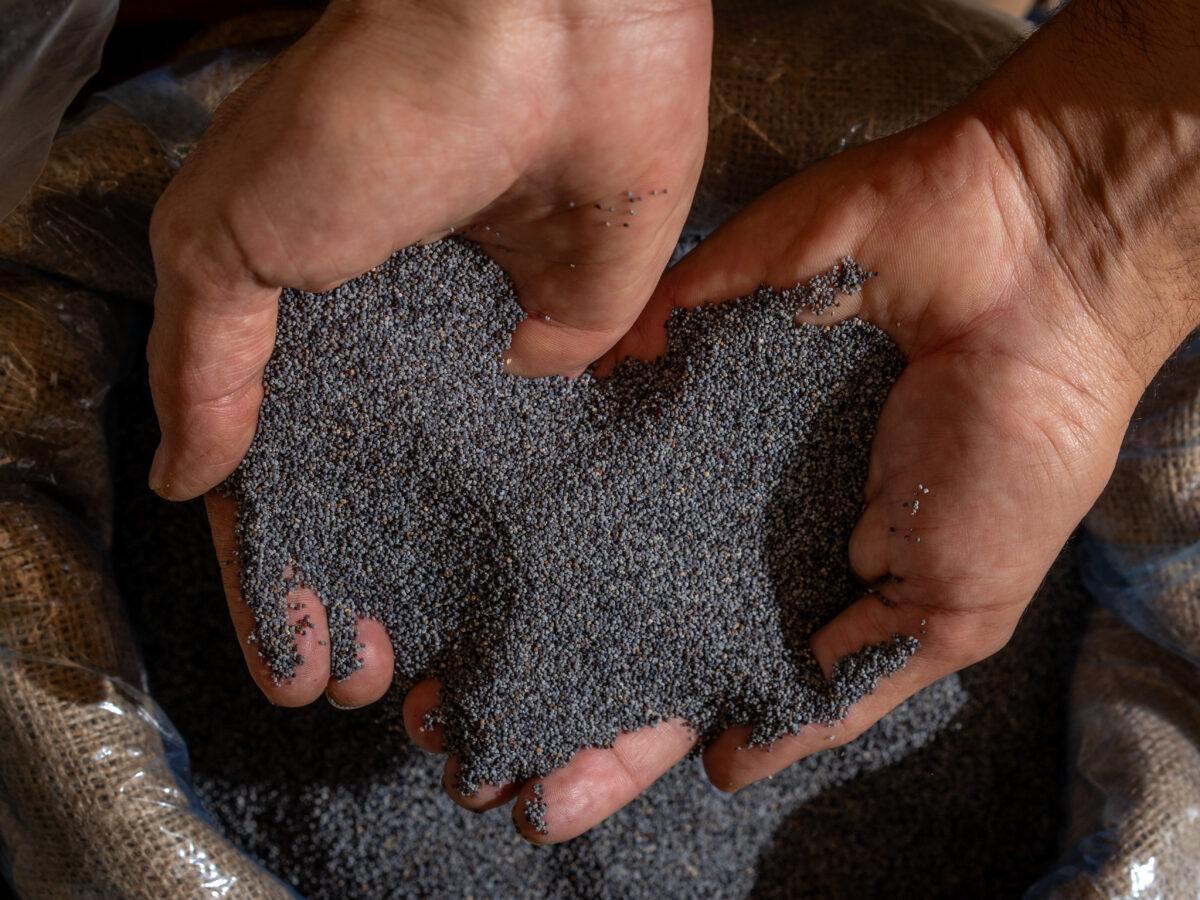An hour after we extracted the two black truffles from the ground, their unique aromas already filled our plates – and our noses. While one of us grated truffle on a steaming pan of yolk-rich pasta bathing in butter, the other used scraps of the aromatic fungus to flavor a scrambled egg.
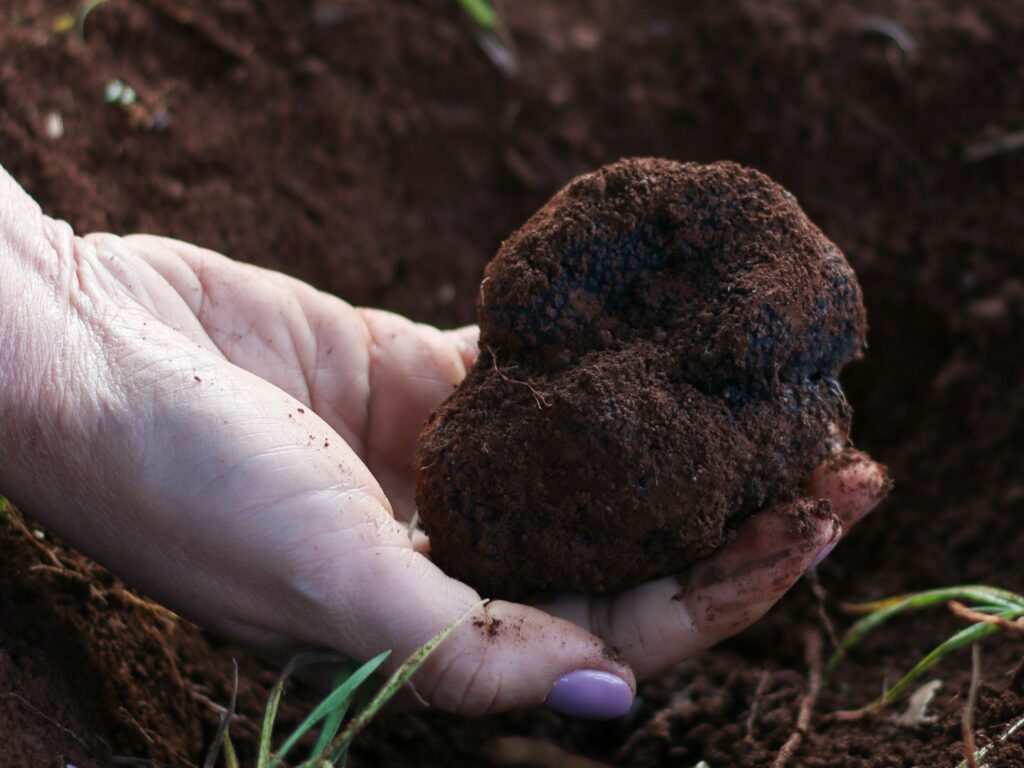
These fungi, rich with earthy aromas which bring to mind a fairy tale forest, did not grow in Italy, on the hills of the Piemonte or in the soil of Umbria, nor in France’s Périgord region. We found them in an oak orchard, in the volcanic and basalt soil of the Golan Heights. There, a few kilometers from their labs and high-tech offices, the workers of Ilsar — a jolly bunch of lovers of agriculture, wine, good food, dogs, and people — cultivate black truffles that carry great promise for the Israeli culinary world, while posing quite a few questions about agriculture, agritech, and local food.
“Technologically speaking, we intervene at the moment of holy union between a truffle spore and an oak seedling with a clean root system,” says Nimrod Tabenkin, the company’s CEO and founder. “It’s a bit like IVF: we provide the ideal conditions for conception, then send it back to the ‘uterus’.”

Ilsar is an Israeli foodtech company, founded in 2011 by Tabenkin, chairman Yoel Givol, and CTO Tal Monchase. Together, they developed a technology for growing truffles in the soil of the Golan Heights.
To understand their work, we first need to take a few steps back and examine the fascinating natural symbiosis between fungi and their environment. An enormous kingdom, most fungi are saprotrophic, that is, they process decayed organic matter and recycle it, boosting the ground’s fertility. Truffles (of the Tuber genus) belong to a group called mycorrhiza, or root mushrooms (from Greek: mýkēs, “fungus,” and rhiza, “root”). These fungi have a symbiotic relationship with plants: the fungus colonizes the plant’s roots, envelops them and facilitates the absorption of nutrients from the ground — mainly minerals, and most of all phosphorus, which is in short supply. Truffles inoculate oaks, increases their surface area, and allow the tree to receive nourishment through their mycelium (a root-like structure, made of thin threads called hyphae).
How do the truffles and oak trees work in harmony?
In a real symbiosis, like in a relationship or in business, both sides must benefit and have their needs met,” says Tabenkin. In return, he explains, the oak supplies sugars to the fungi, which has no access to sunlight. “The next stage,” he says, “is the motivation of all organic creatures: to reproduce, to acclimatize, and to improve the species. The truffle uses more than 300 recognized, powerful aromas developed over millions of years of evolution. In winter, when the ground is frozen and muddy, these unique aromas can reach the nose of a female wild boar up to 10 km away. These aromas drive her mad, because they correspond to areas of the brain that are related to sex hormones. The boar will do everything she can to reach the truffle — and when she does, she’ll dig it out and eat it. The acidity in the boar’s digestive system breaks apart the fungus, and its spores undergo a process of maturation. Finally, the boar excretes the digested, mature spores, and if our fungus is lucky, a spore will meet the root of a tree with which it can form a symbiosis, like an oak or another type of nut tree, and a new truffle colony will be born.

So, what is the problem that Ilsar is trying to solve?
“This symbiosis is so complex, that it rarely occurs in nature anymore. New colonies stopped developing in Europe, the natural birthplace of the French black truffle (Tuber melanosporum) and what is worse, is existing territories have been shrinking due to a significant decrease in the population of wild boars and the number of oak forests, and of course as a result of urbanization and industrial agriculture.” The truffle industry has long been warning against climate change’s effect on truffle availability, with demand exceeding supply as it is. “It is not only that territories are shrinking — in many established orchards we see invasive species of fungi, including local, stronger and non-culinary mycorrhiza fungi, as well as fungi from the Far East that had been imported to Europe as fake truffles and changed the biological equilibrium.” Tabenkin speaks lovingly of truffles, describing them as noble and fragile; it’s easy to take over their territories. “200 years ago, the seasonal yield in Perigord was around 200 tons of black truffles. Last year we are talking about 25 tons in all of France, while demand just keeps rising.”
Can you tell me about the technology you’re using?
“When a sperm and an egg are unable to fuse naturally, you provide them the perfect conditions to do so, and then return them to the womb without making any genetic alterations — this is how we work.” Ilsar uses a technological process to develop the root system of mineral-thirsty oak seedlings. When their structure is right for an encounter with a mycorrhiza fungus, they are inoculated with spores that underwent a chemical-technological process imitating their maturation inside the boar’s digestive system: this is done by planting the seedling in the ground with the spores and a measured amount of minerals, mainly phosphorus.
“At this stage, if the fungus decides to work for the tree, that is, to break down the minerals and transfer them to the roots, and if the tree begins to send sugars down into the fungus, they become a couple. And we send these newlyweds on their honeymoon” — that’s how Tabenkin describes a sterile environment — “with no other fungi. With no trees, without other temptations, with complete control over humidity, temperature and light conditions. We give them a year to work on their relationship.” During this year, the oak’s root system develops, the fungus wraps itself around it, and the symbiosis becomes more robust. A sampling of the root is then DNA tested, to make sure it belongs to a strong Tuber melanosporum (‘you can call it a paternity test’). Now it’s time to transfer the sapling to the ground and wait until the mycelium matures and creates a fruiting body — the fungus. We know how to identify its powerful aromas and locate it with the help of trained dogs and a team of trainers.”

Ilsar isn’t the first company to experiment with truffle farming in Israel, but it is the first to reach this degree of success, at least with Israeli chefs and restaurants. In the south, there have been attempts to cultivate Terfezia boudieri, which grows in symbiosis with a desert plant called Helianthemum sessiliflorum. And on kibbutz Bar’am, the summer truffle (Tuber aestivum), considered culinarily inferior, is cultivated in collaboration with the Ben-Gurion University of the Negev and the Agricultural Research Organization Volcani Center.
How does one decide to start growing black truffles in volcanic soil?
“Being an Israeli farmer is becoming an increasingly complex task. With the market’s globalization, there are less import taxes, less protective subsidies. It becomes a cost-dependent market: everything depends on market prices. As labor and water costs are significantly higher in Israel, when we began this project, 12 years ago, we were looking for our relative advantage as Israeli farmers, and understood the answer was research. Yoel Givon, who co-founded the company with me, read a book by a researcher called Dr. Ian Hall, the first to successfully cultivate the French black truffle outside of Europe. Hall grew his truffles in volcanic soil in New Zealand, which is quite similar to the soil of the Golan Heights. Hall’s research ignited our imaginations, and eventually we received permission to use his research, continued our own independent research, and here we are today.”
“40 years ago, when my parents came to the Golan Heights, there were no fruit trees around,” adds Tabenkin, who was born and raised in moshav Ein Zivan. “Today that are thousands of acres of deciduous trees. 35 years ago, there were no vineyards; today, we have more than 40 wineries. I believe that if we continue our work, the truffle industry can transform the Golan Heights.”
Is the volcanic soil of the Golan Heights suitable for growing black truffles?
“Black truffles need alkaline soil, which has high pH levels, like in Périgord in France or in other areas in Europe and in Israel — the Upper Galilee and mountains around Jerusalem, which have alkaline limestone soil. In this type of soil, plants have difficulty extracting minerals from the ground — a prerequisite for the fungus-oak symbiosis. The volcanic soil of the Golan Heights is rich in minerals and has low pH levels, just like the soli in the New Zealand research, and what we do it raise the pH level at once. In a process called liming, we add lime to the ground and make it ideal for truffle. As our truffles were not subject to millions of years of competition and selection, our crops are clean of disease. This maximizes our chances of growing the classic French black truffle. We create optimal conditions for the fungus, but without its natural enemies, so while European territories are shrinking, ours keep expanding.”
A crucial element here is the technology and accumulated knowledge about soil makeup. Can this technology be replicated elsewhere in the world in different soils, such as sand or desert soil?
“The greatest technological complexity is creating the tree-fungus symbiosis, and we invest most of our funds in seedling manufacture. Our quality standards are among the strictest in the world, and only high performing seedlings get to continue to the next stage and be planted in natural soil. For the moment, we plan to stay in the Golan Heights, where the truffle is clearly comfortable. But yes, there is great potential to take the knowledge, technology, research and experience, and replicate this project elsewhere.”
As part of their holistic worldview, the Ilsar team, who see the Golan Heights as their professional home, collaboratte with local farmers. The Israeli Law of Agricultural Settlement, land allocated for agricultural uses by agricultural entities (mainly moshavim and kibbutzim) cannot be sold or leased; land partnerships can only be established if “the partnership is between residents of the settlement, and the partners work equally.” “We are a private company, so we cannot own orchards. For this reason, we developed a partnership with nearly all the landowners of the northern Golan Heights: we provide the knowledge and seedlings, they provide the soil, water and labor, and we share the results.”
So there’s a symbiosis with the farmers of the Golan?
“Exactly. This method is the right thing to do business-wise, and it’s also a community project, involving farmers who have a rich experience with deciduous trees and vineyards. We offer them a chance to expand their crop variety, and thus minimize the inherent risks of agriculture. We are proud of it, and see their interests and economic viability as an inherent part of our business plan.”
Now that we understand the problem that you are trying to solve, what about problems which might arise from this solution? Aleph Farms, which manufactures cultured meat, has a sustainability division, responsible for solving problems that their technology might cause. Do you have something similar?
“Our motivation for growing truffles isn’t ecological, but a truffle orchard is a huge environmental asset. There is a substantial mass of mycorrhiza on the roots, which is one of nature’s most efficient carbon sequesters. Our fungi restore the soil, and we employ a process that’s highly natural, so I don’t expect any problems; in fact, the contrary may be true. “
We know so little about fungi. Aren’t you afraid of a scenario in which we suddenly realize this genus doesn’t belong in this soil?
“I understand your question and I think it’s worth asking. When you create change, you must understand the chain reaction. So far, we haven’t seen significant risks — except the risk of not succeeding, of course.”
Who are your target customers?
“Outside of its growing areas, the traditional target customers are restaurant goers; but as quality products and luxury goods become more accessible, we see growing numbers of foodies, and COVID has accelerated this trend. It is only the beginning, but we see very big players entering the market. So for the moment we are happy and excited to work in Israel, but in the long term, our target customers are abroad.”

You also offer data collection for each step, for example, a documentation of the locations in which fungi are found. Tell me about that.
“We regard our work as 100% research, and I like to say we go out to the orchards with a hoe and a microscope. Today, when I find a truffle, I can retrace the oak it colonized, its genus, its origin, the origin of the spore and the fungus, which treatment protocols were implemented, etc. The advantages are huge. Scientifically, we can learn a lot from big data. It also provides a marketing advantage, as I can offer a certificate of quality and full traceability in a market flooded by counterfeit. Today, customers want to know where their food comes from, the identity and motivation of its makers. And we’re absolutely doing farm to table. Or in our case, dogs to table.
In Italy, they call cultured meat “Frankenstein meat,” while in Israel, it seems people are more open to innovation and foodtech. How is the French black truffle from the Golan Heights received in the world, and in Israel?
“First of all, it’s important to note that the technological intervention is minor. We do not perform genetic editing — only a kind of IVF — so this is a completely natural product. In addition, in the last decades the European market is struggling with fraud, so there is considerable openness. In France, we are now in the process of what we like to call ‘selling ice to the Eskimos’ — selling black truffle to a chain of up-scale French delicatessens, for example. They are very excited about our product.”
And what about Israel?
“Israelis tend to be more skeptical. Some don’t believe you can grow quality Israeli truffles. People also don’t really know how to taste them. They are more familiar with the flavor and aroma profiles of truffle oil molecules, which are at best made from cabbage or artichoke, or in the worst case, designed in a lab. Truffle is neither food nor spice, it is an entire culture, and we learn something new every day. We are happy to know we can allow local chefs and foodies to work with local truffles.”
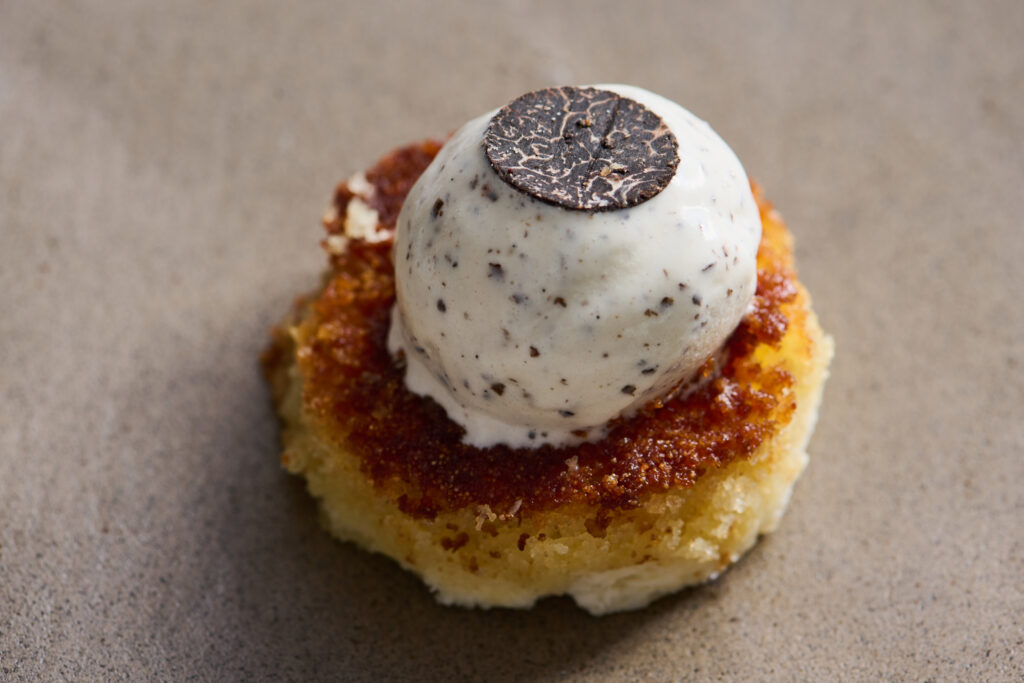
In Europe, truffle aromas last for 10 days after extraction. What about Golan truffles?
“It’s about the same, but there are techniques for preserving the aromas. Chef Moshik Roth, for example, taught us to make truffle purée and truffle mousse. Mattarello cafe on kibbutz Ein Zivan serves truffle butter, which is another method of preserving flavors and aromas. Of course, you can also grate fresh truffles on a scrambled egg or on pasta, or make potato salad with truffle aioli. Israelis aren’t committed to tradition, so I’m curious to see the future of truffle culture in Israel.”
So is the prestigious white truffle of Piemonte on the horizon?
“I’m not sure I should be talking about this, so I will just say we’re in very preliminary stages of inoculating white truffle (Tuber magnatum). Unlike French black truffles, no one has yet succeeded in farming white Alba truffle outside their natural areas. We see encouraging results, but it’s too early to talk about success.”
